Nexus 7 (2013) - Mini Review
by Brian Klug on July 27, 2013 12:54 AM EST- Posted in
- Tablets
- Snapdragon
- Qualcomm
- Android
- Mobile
- APQ8064
- Nexus 7
- Android 4.3
The real highlight of the new Nexus 7 is of course the much higher resolution display. At 1920x1200 the Nexus 7 is now the highest resolution 7-inch tablet. This new IPS panel is made by JDI (Japan Display Inc) and boasts better viewing angles, 30 percent more gamut than the previous one, and of course better dot pitch of 323 PPI. Alongside that the new Nexus 7 also doesn’t have the always-on dynamic brightness and contrast (NVIDIA Prism / smartdimmer) that many including myself found frustrating with the original Nexus 7. On the new version the equivalent functions are enabled only during full screen video playback. This is a huge improvement since with the feature enabled on the previous Nexus 7 I always felt that greens were undersaturated and some dynamic range clipped.
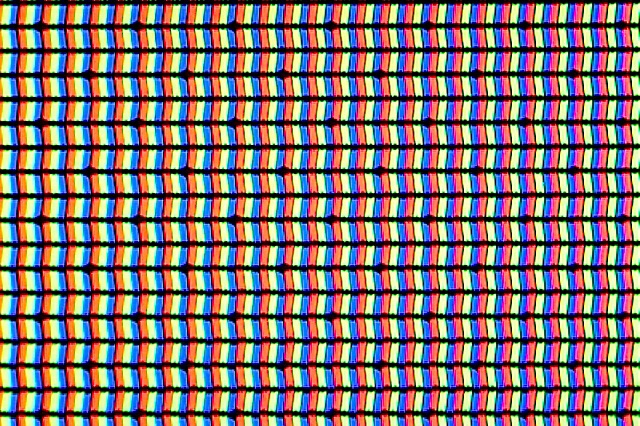
I did a lot of asking around about how Google calibrates its panels, and was told that in the case of the Nexus 7 there are two stages. The first is the calibration done by JDI on the panel at a high level, the second is an additional calibration at time of manufacture, per device. This sort of thing is relatively standard, but I’ve always been curious about what stages cost extra money – certainly it’s a baseline expectation for the panel supplier to supply a close-enough LUT, but getting Delta E even lower I’m told requires additional expenditure.
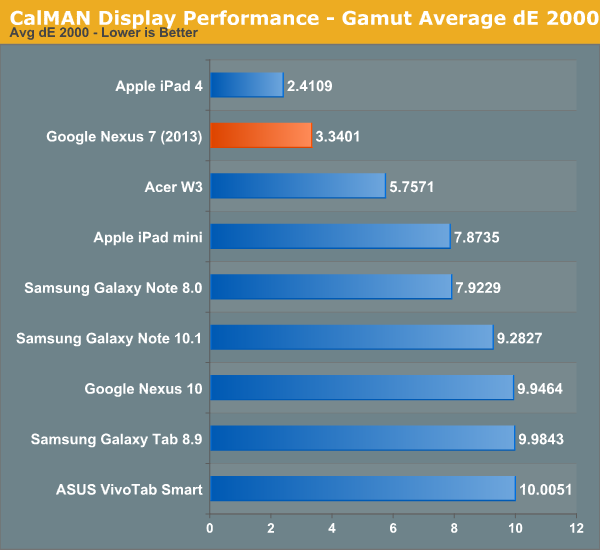
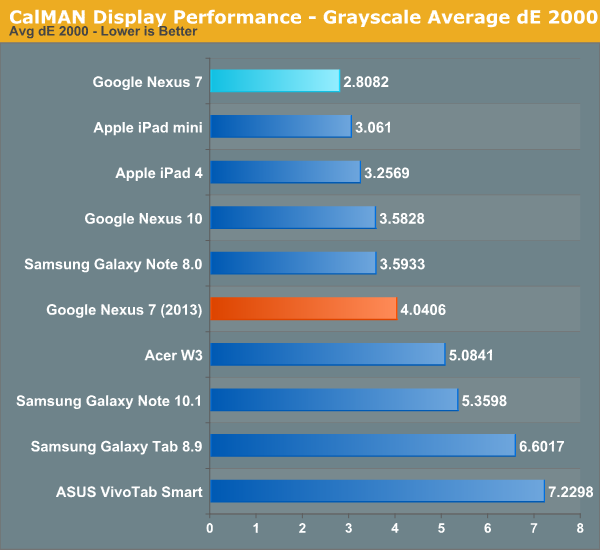
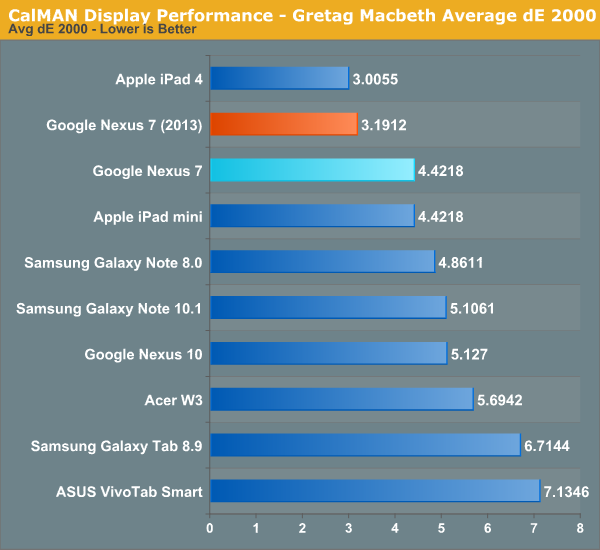
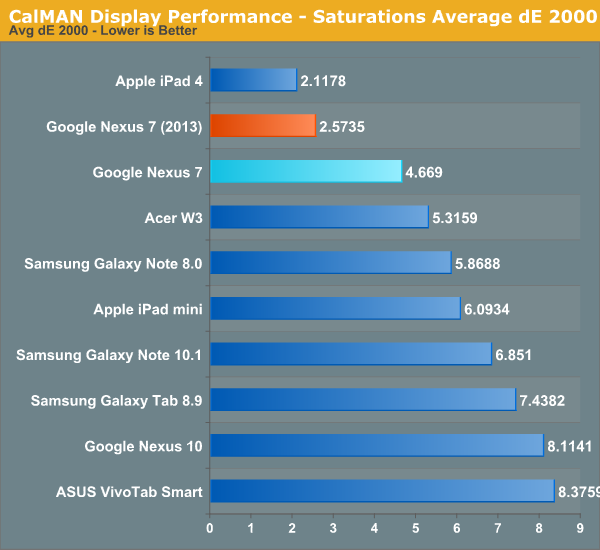
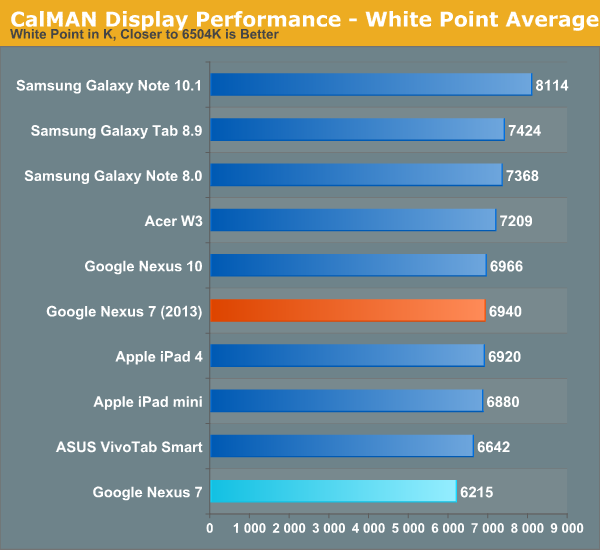
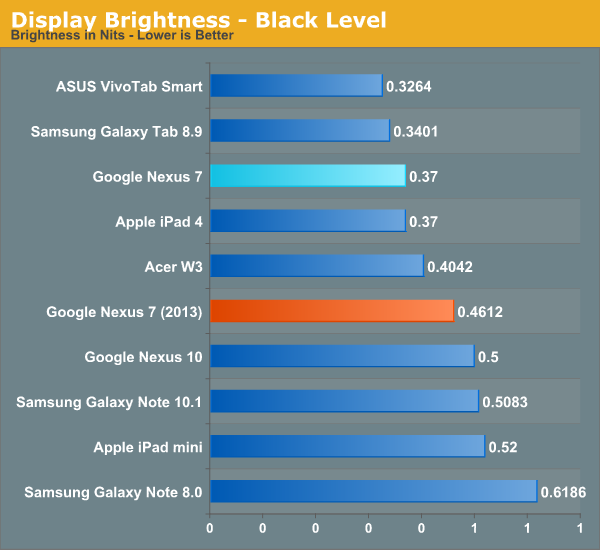
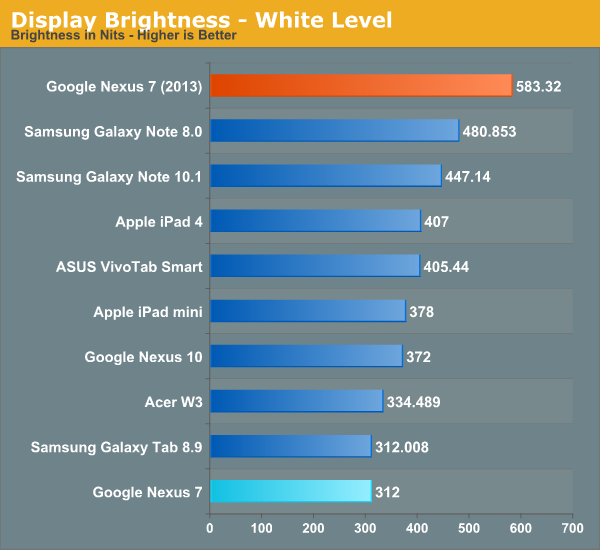
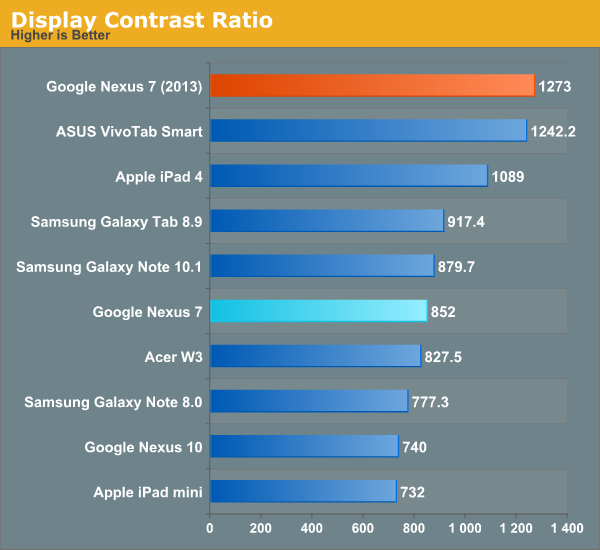
It turns out that the new Nexus 7 is actually very close to sRGB this time around, with overall gamut being just a bit bigger than the sRGB color space. In the GMB Delta-E and saturations Delta-E measures, arguably the two most relevant for color accuracy, the new Nexus 7 is second only to the iPad 4, and better than the iPad Mini in color accuracy, a significant step forwards from its predecessor.
The new Nexus 7 also goes very bright, up to 583 nits, with excellent contrast of 1273. This is again not achieved using any dynamic contrast cheating since those functions are thoughtfully disabled.
On the display side of things I’m very pleased with how far the Nexus 7 has come, and it’s obvious that display quality was a big focus for the 2013 model.















252 Comments
View All Comments
Sunburn74 - Saturday, July 27, 2013 - link
Actually wow I just learned there is a 30 dollar adapter that will convert the micro usb to a HDMI out! Amazing!Brian Klug - Saturday, July 27, 2013 - link
Yes, you can buy a USB SlimPort HDMI adapter and get HDMI output, same as the Nexus 4.-Brian
Impulses - Sunday, July 28, 2013 - link
Is there anything else out there that uses SlimPort? Not sure what advantage it has over MHL which was already on the way to being pretty common (and even convenient with the new style of cables split at the HDMI port, see Monoprice). I think you covered this in an old pipeline article (potential advantage/reason for Slimport) but I forget...Da W - Saturday, July 27, 2013 - link
Are you kidding?SOMEONE PLESE MAKE A 7" AMD KABINI WINDOWS TABLET!!!! I'M A BUYER!
Krysto - Saturday, July 27, 2013 - link
Doesn't Kabini have like an 18W TDP?TheinsanegamerN - Saturday, July 27, 2013 - link
yes, it does.Death666Angel - Saturday, July 27, 2013 - link
No, it doesn't. There are Kabini variants in the 9W/15W/25W TDP ranges. Too much for 7", but could be fitted in a 10.x" and definitely a 11.6" tablet/convertible.enealDC - Saturday, July 27, 2013 - link
As an owner of both a nexus 7 (gifted) and a transformer prime, i'm done with android tablets. beyond consuming content, i really don't have any use for them. Not to mention the fact that not a month goes by that I don't wish i waited when buying my Transformer Prime. Asus rewarded me as a customer by immediately (almost) planning a better version of the device they sold me. As such, i will reward them by not purchasing another Android Tablet again.Broo2 - Saturday, July 27, 2013 - link
you would prefer they not update their devices as technology improves? With that mentality, we would all still be running PalmOS phones with a 320x240 restive screen an EDGE network...It is likely Asus started planning the Prime in 2011 and the new Infinity screen fabrication and CPUs technology came along in mid 2012- while they were already starting to work on production of the Prime.
Never regret any decision you have made as you can never change what has already happened and it just causes stress and frustration. Instead of feeling a personal offense to Asus selling a new tablet, you could sell your Prime on eBay/Etsy and someone would likely be very happy to use it- and you can take the proceeds and put towards something else. :)
Broo2 - Saturday, July 27, 2013 - link
lol; edit -etsy = swappa